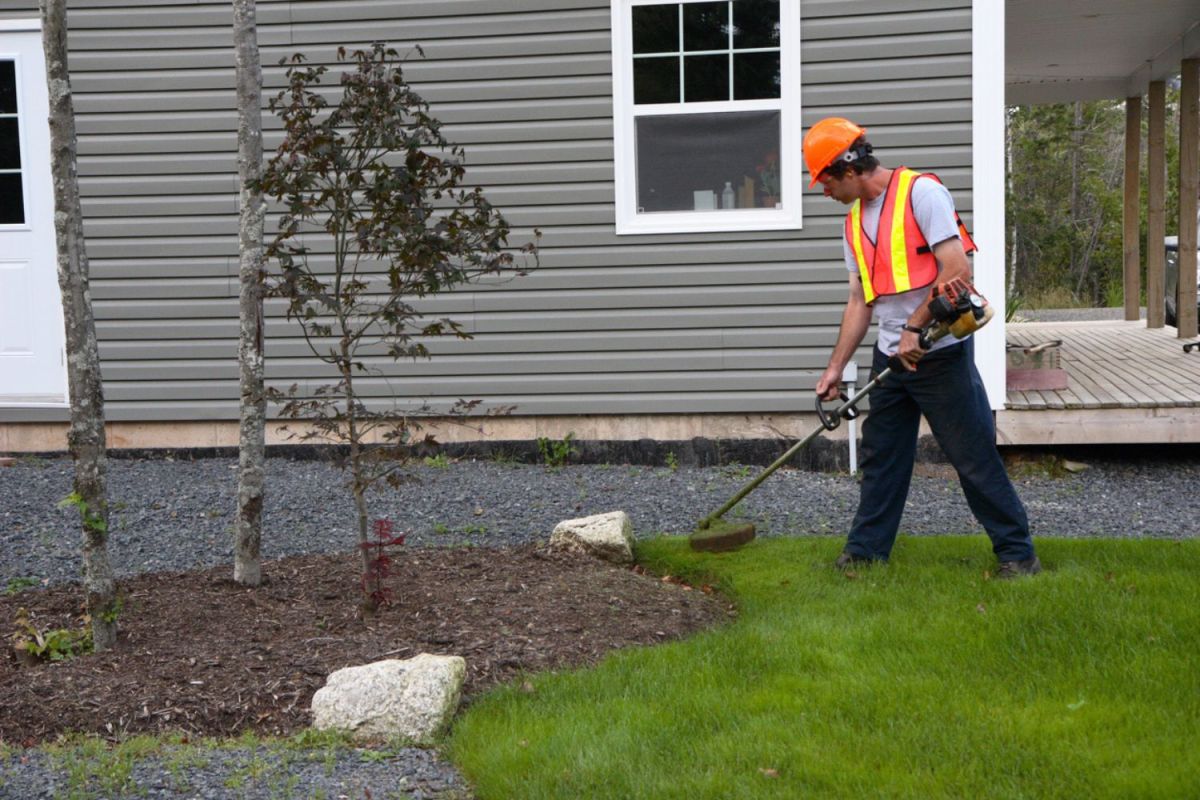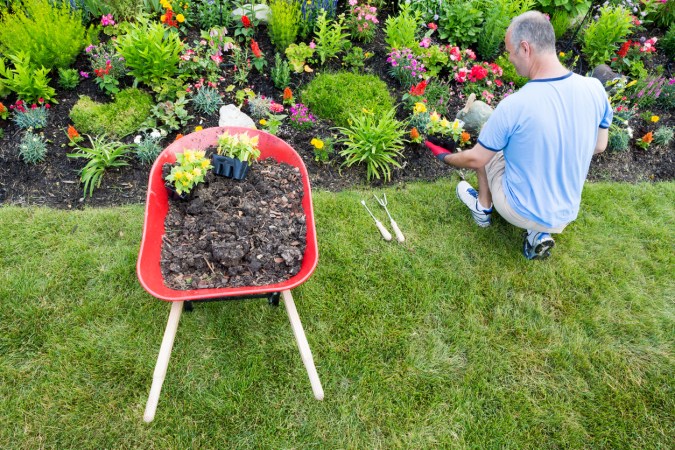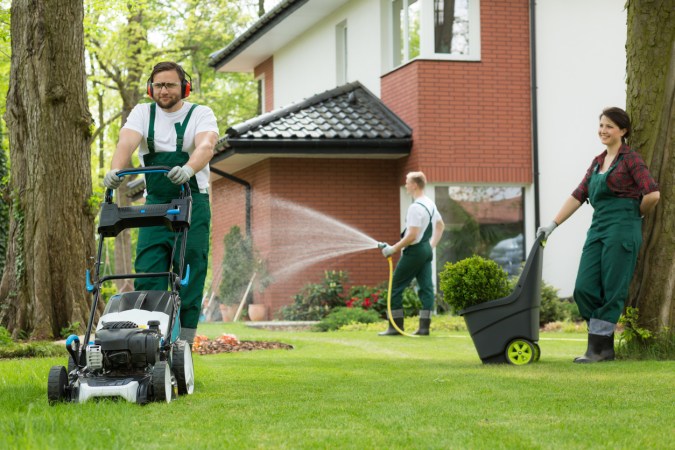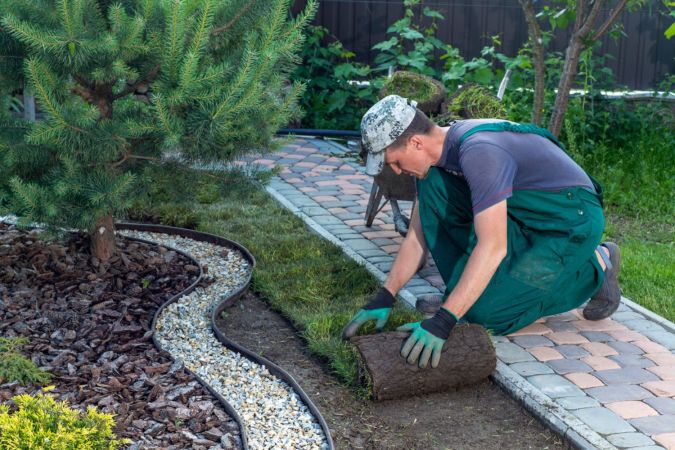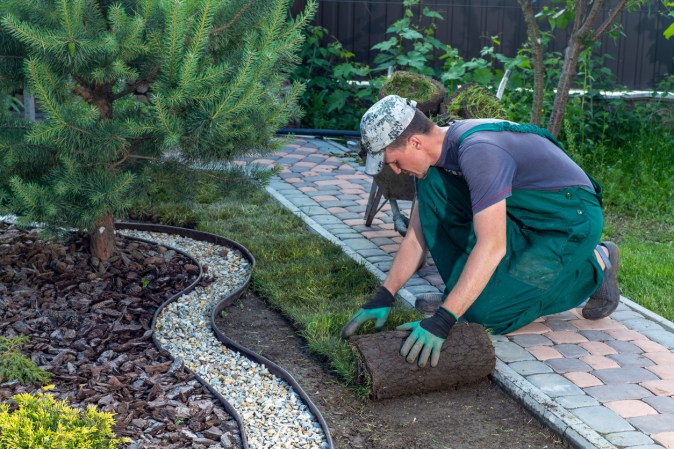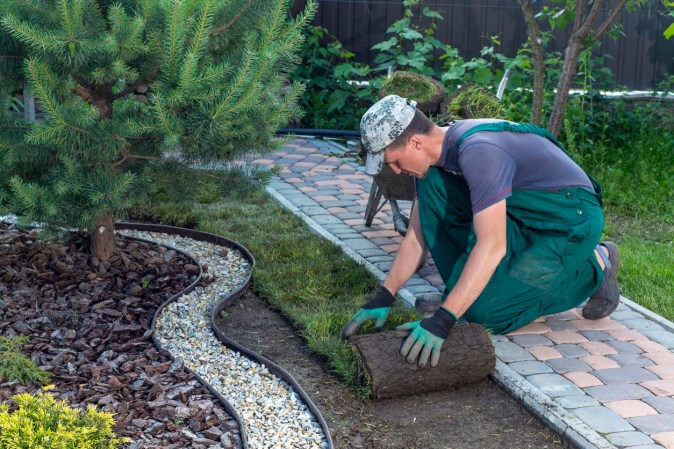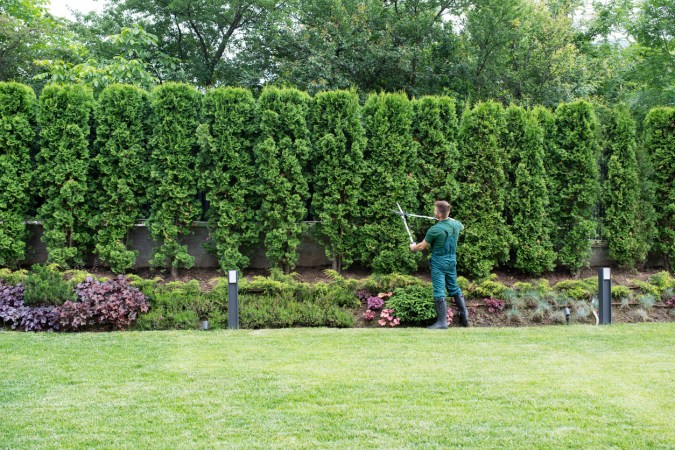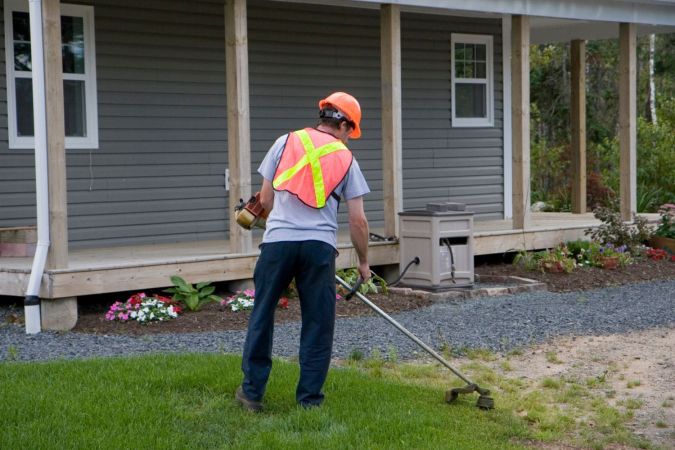We may earn revenue from the products available on this page and participate in affiliate programs. Learn More ›
The best landscaping companies are out there in your neighborhood, maybe even right now, working hard to beautify yards in your area. While launching a landscaping business is no small feat, it’s not enough simply to have a green thumb and the right equipment. Customers are the backbone of any home service industry, and the more the merrier. Whether a business owner is vying for landscape maintenance jobs, landscape construction jobs, or landscape management jobs, the key to creating a strong customer base and landing those jobs is making sure customers know the business exists.
Before You Begin…
Once the landscaping business has been registered and the equipment is purchased, there are still a few things left to do to ensure that a landscaping business can get landscaping jobs. Without customers, there is no work, so cultivating clients and using outreach, both physical and digital, can help boost that customer base. While it’s true that jobs in landscaping can be plentiful, it is also a competitive field, so landscapers can consider using these ideas to help gain an edge and secure customers.
Tips for Getting Landscaping Jobs
- Develop a strong brand including a logo that translates from business card to a website.
- Create flyers and door hangers and canvass neighborhoods where the landscaping business will operate.
- Network with other local businesses, especially in the home services industries.
- Become part of the community through outreach with local organizations, charities, and events.
- Get reviews from current customers and create a referral program.
- Create a dynamic website and strong presence on lead-generating platforms.
- Advertise to neighbors in the community with vehicle wrapping and yard signs.
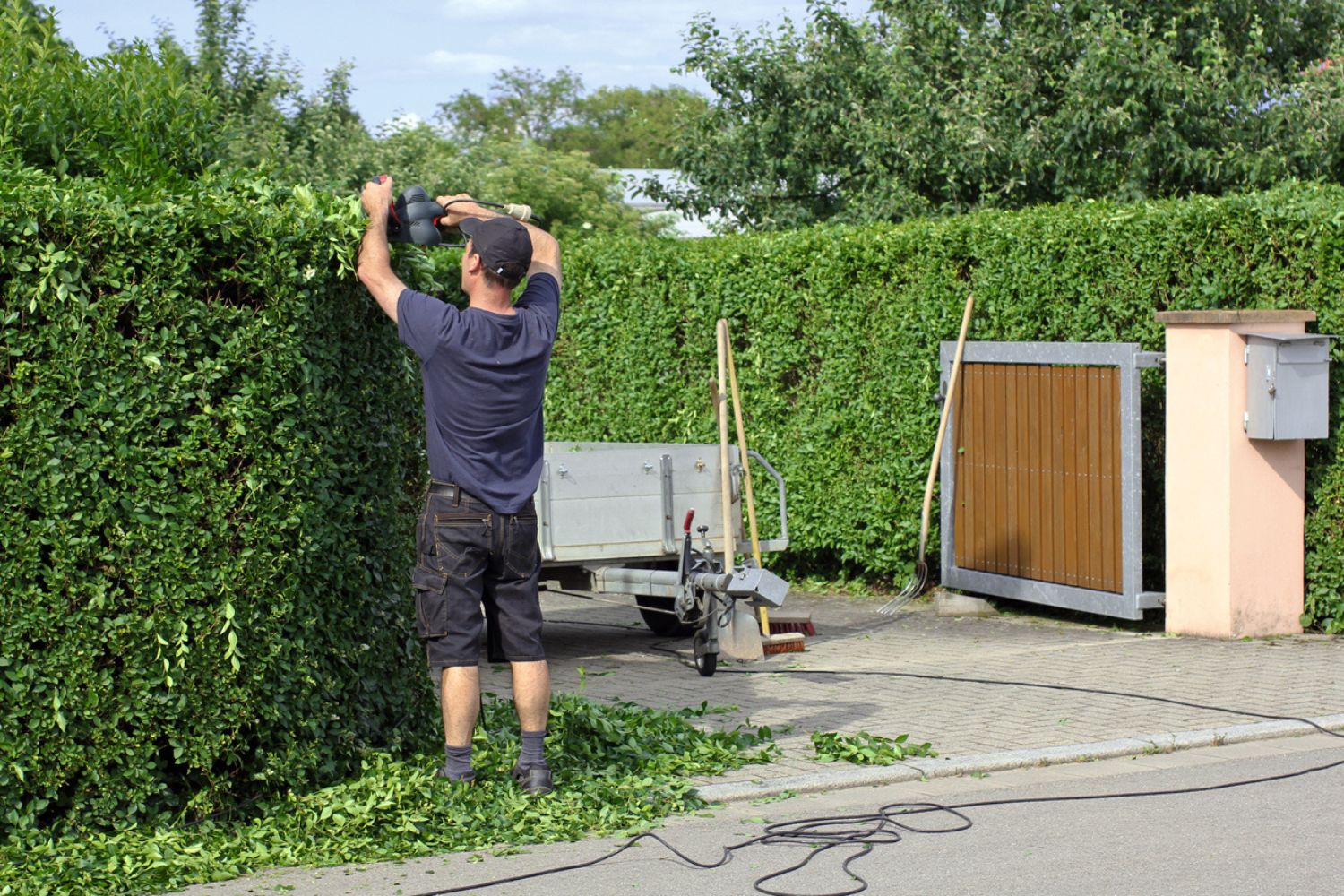
STEP 1: Develop your landscaping brand, including a memorable logo, to help you stand out from the competition.
Developing a brand can be an important aspect of growth when taking a company from concept to successful business. From lawn care to landscape design, there are many specialties within landscaping, so having a strong brand can signal to potential customers the type of service a business provides. Additionally, advertising that a business owner has taken a specialty course, such as one of the best online landscape design courses, can help the company stand out among its competition. Because landscaping is aimed at beautifying outdoor spaces, a logo that matches the aesthetic the company wishes to portray can be central to the brand. Plus, a memorable logo can help current and potential customers identify a company.
Whether a business owner hires a professional designer to create the logo or uses an online tool such as Looka or Canva, identifying the logo that is right for a particular company often starts with brainstorming words or symbols that the business owner wants to associate with their brand. The website, business cards, company clothing, flyers, customer handouts, and advertisements can all feature this logo. This is why, when it comes to the logo, size matters.
Laura Young, a marketing and branding specialist for Levacloud, an Alpharetta, Georgia–based company that supports several Microsoft products and services, explains the importance of a business’s logo. “A well-crafted logo ensures visibility across all sizes, avoiding intricate details that lose clarity when scaled down,” she says. “This is particularly important for a brand that appears on diverse platforms, from digital screens to physical equipment like trucks or lawn mowers.”
STEP 2: Create a user-friendly website and clearly list your services, scheduling options, and price ranges.
Some of the best landscaping companies offer customers an accessible website that both showcases the landscaper’s talents and also provides clear information a customer would want to know. For example, a website that includes slideshows of past jobs, especially before-and-after images, can go a long way toward helping a company secure new landscape design jobs.
In addition to showcasing landscaping jobs, the website will need to make it easy for customers to see a list of services offered. Not all landscaping companies offer the same services, so to would-be customers, it’s a waste of time to contact a company that isn’t offering the services they’re looking for. Up-front pricing is often a welcome sight for many customers, so business owners will want to do some market research on the cost of landscaping. Since every yard is unique, landscaping jobs can vary greatly in terms of labor and materials, so business owners will want to let customers know if the company will provide a free estimate after visiting the jobsite in person.
Additionally, many landscaping companies feature robust content on their website that supports the brand of the company, such as an online “how-to” library full of helpful articles and videos aimed at supporting the long-term health of lawns and gardens and demonstrating how homeowners can care for their yards. Although many landscapers strive to create low-maintenance landscaping, customers typically appreciate receiving handouts about how to care for and maintain their property after a landscaping job has been completed. This information can also live in the how-to section of the website for future reference.
STEP 3: Set up a Google Business Profile to ensure you show up in a Google Maps search.
With a quick online search, potential customers can look up landscapers in their area, so having a Google Business Profile is one of the first steps in ensuring a business shows up when someone searches “landscapers near me.” This information includes location, contact information, hours of operation, and—ideally—photos. According to Google, business profiles with images receive 42 percent more requests for directions via Google Maps—and 35 percent more click-throughs to their websites—than a business profile that doesn’t include photos.
A Google Business Profile can help business owners understand how customers are discovering their business listing and how frequently customers are using the listing to contact the business directly. Businesses can also interact with customers by reading and responding to customer reviews.
“Google reviews are the most accessible reviews out there, so you can be sure that any potential customers who know how to do an internet search are going to see them,” says Rafi Friedman of Coastal Luxury Outdoors, a Ponte Vedra Beach, Florida–based pool construction, repair, and maintenance service. “We work hard to keep our overall rating high and respond immediately to any negative reviews we get.”
STEP 4: Create social media accounts and post helpful gardening tips or before-and-after photos of jobs.
Landscaping lends itself to beautiful imagery, so in theory, there’s no such thing as taking too many photos. Social media can be used to cultivate the brand through photos of work, images of favorite plants, or helpful gardening tips including short videos. Quinten O’Dea, owner of Q&A Landscaping in McMurray, Pennsylvania, used Instagram to build his customer base. “I grew our Q&A Landscaping Instagram account to over 5,000 followers primarily while working in the field by posting frequent updates and quick posts,” he says. “It is good to regularly post in-progress videos and pictures of what your company is working on.” He also recommends landscapers think beyond just plants. “In addition to posting pictures of your work, it is also great to incorporate pictures of your company’s equipment,” he says. “Pictures of equipment with the right hashtags do a great job of building a different market of followers.”
If used effectively, social media can generate customers, but it can also take up a lot of time. This equals time away from the landscaping jobsite and customers, so it’s important to be strategic in how to use it. “My top tip would be to always keep your customer base in mind when making any decisions regarding your social media use,” says Jeremy Yamaguchi, founder of Lawn Love. “For us, we’ve learned that our customer base primarily uses Facebook, so that is the platform we prioritize most, and I imagine that would be the same for a lot of other landscaping/lawn care businesses. We’ve also learned that our customer base prefers educational posts rather than us hopping on social media trends, so we cater to them in that way as well. Basically, you want to meet your customers where they are and provide the content they want to see.”
STEP 5: Include both traditional and digital advertising in your marketing strategy and budget.
Landscaping is an industry that benefits greatly from boots-on-the-ground advertising to allow business owners to get landscaping jobs. This can include strategically placed flyers and door hangers, making it possible to target entire neighborhoods. Flyers, pamphlets, or postcards can be shared with satisfied clients in the hopes they’ll pass them along to friends and family members who are looking for a landscaper. More than one landscaping contract has resulted from such advertising.
Additionally, advertising in local print publications and at bus stop benches can be effective. As for any business, a marketing strategy that includes both traditional and digital advertising can help business owners reach a wider audience. This can include advertising on social media platforms and on the digital pages of local news outlets.
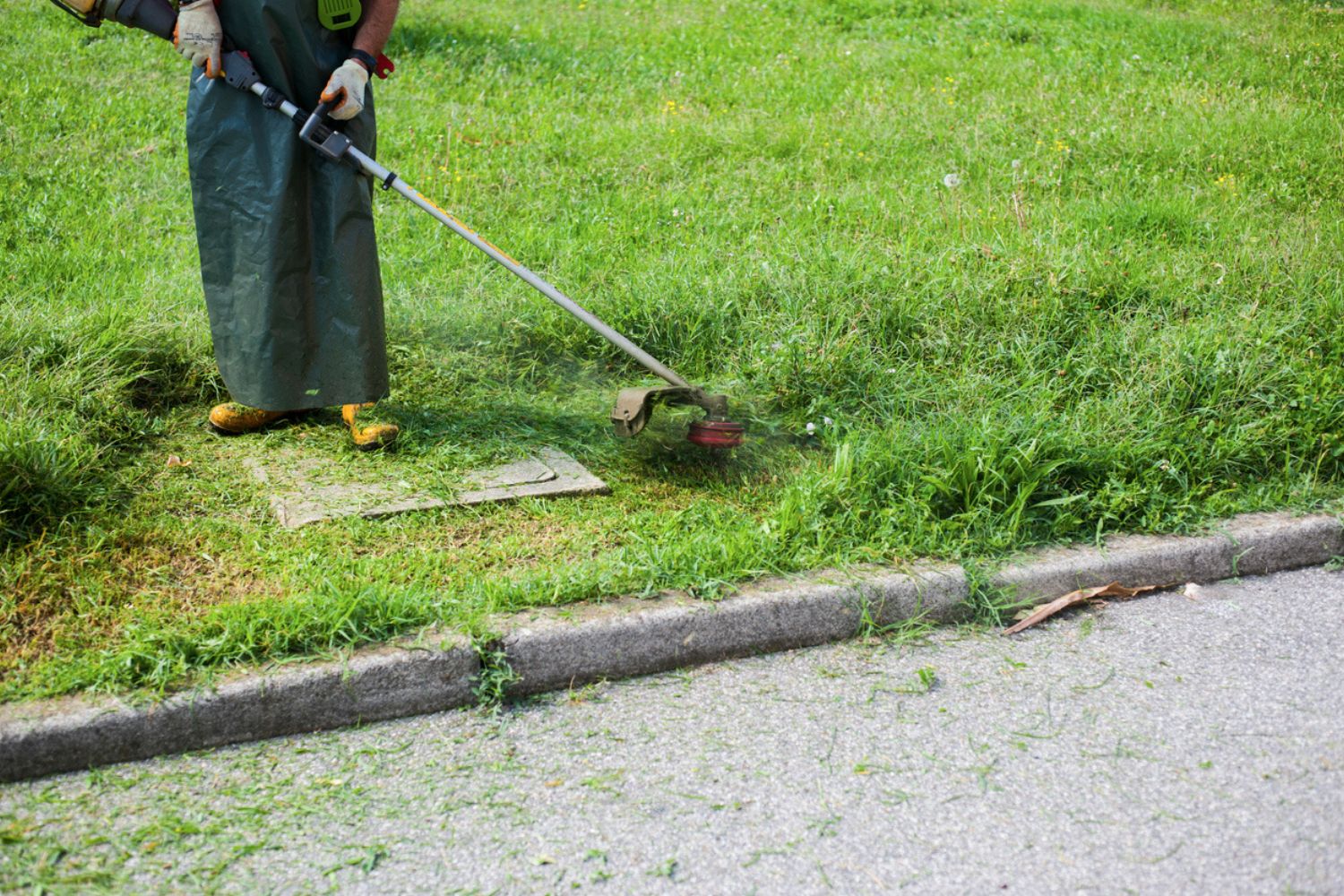
STEP 6: Set up profiles on lead-generation platforms such as Angi, HomeAdvisor, Handy, and Taskrabbit.
Platforms such as Angi, HomeAdvisor, Handy, Thumbtack, and Taskrabbit act as aggregators for service-based companies such as those in the landscaping industry. These sites often include a level of screening. For example, Angi screens professionals listed on the site and then states clearly on the professional’s profile page if the company passed the screening or not. Because of this, customers can feel they are gaining access to vetted professionals and tend to trust companies that are found on these sites. Customers can quickly filter by location, which means finding local landscaping pros is easier. Additionally, previous customers can post about their experiences with a business, allowing customers additional assurances in advance, which can translate directly into landscaping jobs for a business.
STEP 7: Ask your existing customers to leave reviews.
Word of mouth can be the secret to securing anything from small landscaping jobs to landing those big landscaping contracts. Whether it’s through one of the aggregators mentioned previously, or through Google Reviews, Yelp, or directly on the website, potential clients read reviews. This is a way for them to see not only what the quality of service will be like but also how a business responds to customer feedback.
This includes complaints. While glowing praise and five-star reviews are what every company hopes for, how a company responds to negative reviews as well as positive ones can go a long way in demonstrating to new customers how the business owner conducts themselves. Everyone makes mistakes, but letting customers know that they are heard and that issues are being addressed can improve the way a landscaping company is perceived in these situations.
STEP 8: Start a referral program to generate new leads from existing customers.
“Recommendations and referrals are the lifeblood of a successful landscaping business,” says Ryan Farley, cofounder of LawnStarter. “At some point, you’ll hopefully grow large enough that you won’t have the time to give each customer your personal, undivided attention, but in the early days, it’s absolutely essential.”
Offering happy customers a reward for their loyalty in the form of a referral program can help to rapidly expand a landscaping customer base. With a referral program, a current client receives a perk, such as a discount on services, for each referral that is signed. Meanwhile, the customer they refer can also get a discount on their services.
STEP 9: Get your name out in the community by networking with local businesses and supporting community events.
Joining relevant business associations, such as the Chamber of Commerce and the National Association of Landscape Professionals, can offer opportunities for connecting with established businesses, which can in turn help support a budding landscaping business. Connecting with other home professionals, such as real estate agents, architects, contractors, and remodelers, can be another way for business owners to source landscaping jobs.
Beyond networking with other businesses, becoming part of the community where landscaping jobs are based builds goodwill for a business owner, along with brand recognition. Opportunities abound when it comes to community events. These can include sponsoring local youth sports, charitable organizations, and local nonprofits (such as art centers) as well as supporting annual events and celebrations. In some cases, landscapers can donate money or services (or both) in exchange for ad placement or acknowledgment.

STEP 10: Place flyers on bulletin boards in hardware stores, nurseries, and other local businesses.
Customers who are shopping somewhere that sells plants or yard tools likely have one thing that a landscaping business needs their customers to have: a yard. This makes garden centers and hardware stores strategic places for companies looking to create visibility. Placing advertising directly in the path of potential customers is a surefire way for landscaping companies to attract business. Business owners will want to consider the season when placing flyers. Whether that’s advertising help with yard cleanup in September or offering lawn restoration in the spring, they’ll want to think about the type of services any future clients may require. It’s wise for business owners to plan ahead as well. Typically, contracts for landscape architect jobs are finalized months before any planting is done, so architecture and design services can be advertised in the dead of winter when clients are dreaming of their summer gardens.
STEP 11: Get your name out while on the job by adding the business name and logo to your work truck, canvassing neighborhoods where you’re working, and asking customers if you can place lawn signs.
For business owners looking to gain new customers, visibility is a key factor. If a customer hasn’t heard of the company, they can’t very well hire it. Advertising while in action is a great way for business owners to increase that visibility and therefore increase customer base. One way to do this is through vehicle advertising. Commercial landscapers are not the only landscapers who can utilize this type of advertising. Wrapping a vehicle with the company name and logo or using magnetic vehicle signs showcases a business hard at work, whether it’s during the daily commute or while the vehicle is parked at a landscaping jobsite. And because landscaping is such a visual industry, business owners will want to consider having yard signs made to use both during a landscaping job and after one is complete. There may be no better advertising for a landscaping company than a client’s gorgeous front yard.
When it comes to getting landscaping jobs, using creativity and plenty of effort can help business owners grow their landscaping company from a small operation to a big business. Unlike many other industries, landscaping is driven by the tangible, physical beauty of outdoor spaces, so creating a brand that showcases the company’s signature approach needs to be at the top of any landscaper’s list. Though landscaping is a competitive market, a company that finds its niche and runs with it can find success landing those contracts, both big and small.

